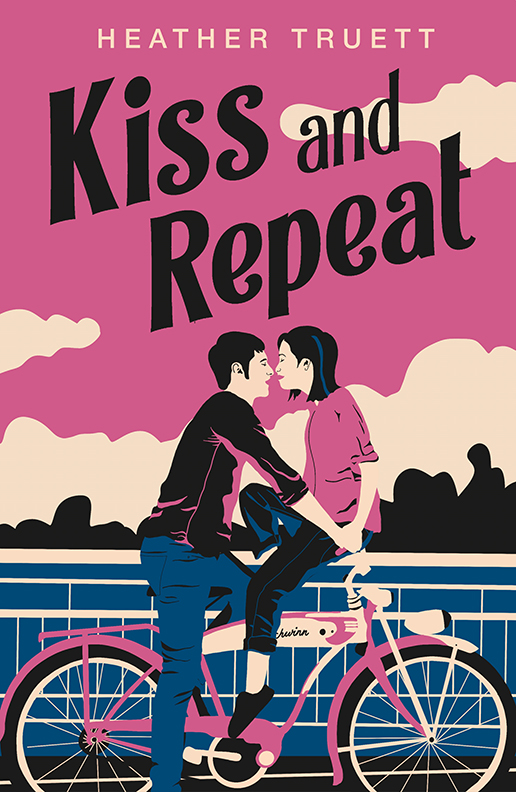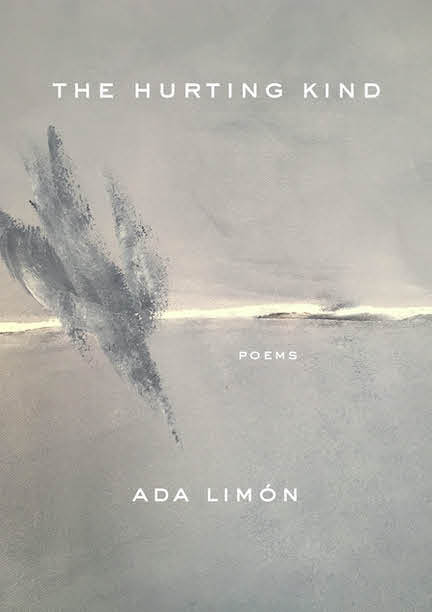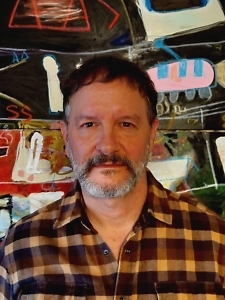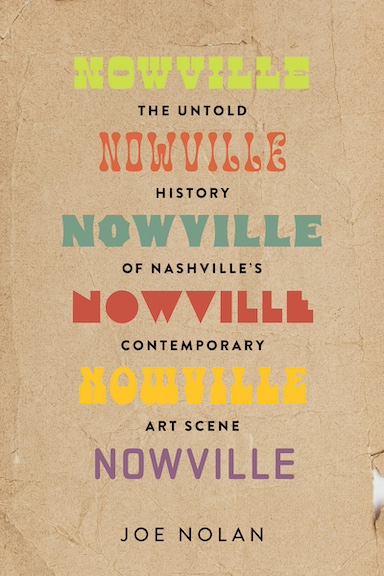Long May We Run
Michael Bess talks with Chapter 16 about Our Grandchildren Redesigned, a speculative look at the near future
Michael Bess is a historian with a remarkably inventive turn of mind, a scholar with wide-ranging and humane interests. Bess received his Ph.D. from the University of California, Berkeley, in 1989 and has taught at Vanderbilt University ever since. He specializes in the history of twentieth and twenty-first century Europe, particularly the cultural and social impacts of technological change. Among numerous other publications, his books include Choices Under Fire: The Moral Dimensions of World War Two (Knopf, 2006), The Light Green Society: Ecology and Technological Modernity in France, 1960-2000 (University of Chicago Press, 2003), and Realism, Utopia, and the Mushroom Cloud: Four Activist Intellectuals and Their Strategies for Peace, 1945-1989 (University of Chicago Press, 1993).
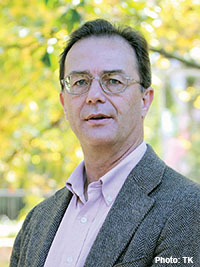 In his latest book, Our Grandchildren Redesigned, Bess begins with an overview of the current state of human bioengineering before offering a carefully considered speculation about the kinds of human enhancements we can expect in the coming decades. From that vantage point, he delves more deeply into the ethical and philosophical problems these changes promise to bring about, considering their impact upon the society and culture of the future, including challenges to the very meaning of human identity.
In his latest book, Our Grandchildren Redesigned, Bess begins with an overview of the current state of human bioengineering before offering a carefully considered speculation about the kinds of human enhancements we can expect in the coming decades. From that vantage point, he delves more deeply into the ethical and philosophical problems these changes promise to bring about, considering their impact upon the society and culture of the future, including challenges to the very meaning of human identity.
Bess answered questions from Chapter 16 via email:
Chapter 16: A few times in the book, you use the automobile as an analogy or metaphor for broader problems or issues. I noticed that among the book’s dedications is one for your car, a 1963 Volvo, which, you write, “taught me that a machine is not just a machine.” How did your relationship with that car inform your thinking in the book?
Michael Bess: That car was bought used by my dad in 1965, with already-high mileage. He drove it for about fifteen years, during which time the odometer died of exhaustion. All the other parts of the car were working fine when he gave it to me in 1980 before he moved to London to spend the last decade of his life studying with a Sufi master. So the car is enmeshed for me with memories of my splendidly off-beat and quirky father.
We named it together while on a camping trip in the Sierras. For purely random reasons we decided on a fusion of Hungarian nobility and Berkeley counterculture, and came up with Baby Stokanza-Minza. What else would you name a banged-up 1963 Volvo? (We shortened it eventually to Baby Sto.)
We used to paint Baby Sto by hand every few years. We’d buy a case of beer and a gallon of house paint and some brushes and go out and paint the car. Friends would join in if they happened to be around. There are about fifteen layers of paint on there, including Porsche Silver (which didn’t look good at all, so we bought another case of beer and repainted it the next day in French Blue).
A dear friend was once trying very hard, and failing, to win the affections of one of the women in his lab. In desperation, he came to me and asked if he could borrow Baby Sto so he could invite his intended for a romantic drive to the beach. When he returned late that night, he triumphantly informed me that the Baby Sto factor had put him over the top.
All this is by way of saying that the car’s story is inseparable from my story, from who I am. The machines, devices, and tools we use acquire an aura of meaning over time, and if we choose, we can enter into a kind of dialogue with them. We tend to think of machines as mere instrumental devices, made by us to serve a practical purpose, and disposable when they cease to be useful. But it’s also possible to think of them differently. They shape us in subtle ways—our habits, our sense of possibility, the metaphors we use. They are inanimate objects, but this doesn’t mean they don’t carry meaning. They do. And since that’s the case, we can have an interesting sort of ongoing companionate relationship with them. I think my life becomes more interesting when I view my machines and tools (and home and food and ecosystem—what the philosophers call “the material substrate”) in this affectionate way. I suppose you could call it a sort of postmodern ironic animism.
By the way, in case you’re wondering, Baby Sto is still going strong. If they stop making gasoline for cars, I will convert him to hydrogen fuel cells. If he dies before I do, I will turn his body into a rock garden in my front yard. If I predecease him, I wish to be buried inside him, then cremated (both of us together, which will require a large crematorium), and then have the ashes spread on one of the beaches at Point Reyes, California.
Chapter 16: You manage to sort through complex ideas or issues with remarkable clarity in Our Grandchildren Redesigned. Relatively short chapters help the cause, as does your knack for summarizing in conceptual lists or typologies, a tendency also evident in your last book, Choices Under Fire. Could you describe the process by which you come up with those? What makes for a good conceptual list, and what makes for a bad one?
Bess: I’ve always been a list-maker, as far back as I can remember. It’s just the way I think, and it spills over into how I write. (It drove my editor at Knopf, Ashbel Green, nuts: he would wryly present me with lists of my lists to drive the point home…)
The utility of lists lies in figuring out what your hierarchy of concepts needs to be: the categories that matter most and those that matter less. When I’m working my way through a new subject area—say, the mind of Leonardo da Vinci, or the neuroscientific basis of conscious awareness, or the nature of ethical decision-making—I tend to start off by breaking the material analytically into lists of basic elements. Then I try to figure out which elements go together with others and where they stand in the overall hierarchy of relationships. The list, which started out as a mere congeries, becomes infused with structure—a provisional pattern or re-ordering that I’m trying to impose on the material. Then I come back the next day with a fresh mind and work through it all again. Some of the key concepts end up falling apart and are redistributed in new ways; some of the “lower-level” elements get promoted to a place of higher generality. It’s a process that never really ends.
The result, when it works, is a conceptual roadmap that allows me to see in my mind the relationship between the parts and the whole: it lends structure to what would otherwise be an unmanageably disparate and wide-ranging set of factors. Two equally important values are in tension here: the value of simplicity and clarity, and the value of complexity, intricacy, and nuance. A good conceptual list is one that breaks down the material into something that can be grasped, while still respecting those aspects of the world whose complexity is truly irreducible.
People sometimes distinguish between books that are written for a general audience or for an academic audience. But I resist this distinction. I have little patience for “academic” works in which extreme levels of complexity, abstraction, and abstruse language seem to be held as intrinsic markers of great originality and insight. I admire thinkers like Plato, Rousseau, and Nietzsche who expressed their ideas in straightforward language that a college freshman can grasp. It should be the ideas themselves that get under our skin and unsettle our world—not the “difficulty” or opaqueness of the language in which they’re laid out. To me, the goal is to achieve the greatest possible degree of clarity—to explain something in language that can be readily grasped by a wide readership—without doing violence to those inherent intricacies and nuances that are truly essential to the subject. It’s not an easy balance to find.
Chapter 16: One of the real joys of this book is reading your own short science-fiction interventions, in which you imagine worlds where a particular enhancement has taken hold, setting up your analysis in the middle of the book. Nearer the end, you ask the reader to think a bit more about the aggregate effect of all of these things, the big picture of a radically transformed future, so to speak. I noticed that you included a filmography at the end of the book and on the companion website. Which film or films do you think best represent these aggregate effects in the life world of the future and why?
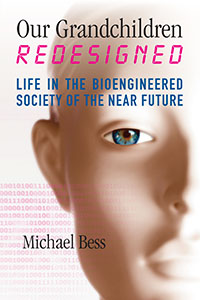 Bess: I think our filmmakers have done a far better job of imagining a world populated by intelligent machines (robots, AI) than one populated by large numbers of highly modified humans. My two favorite films about intelligent machines are Her (by Spike Jonze) and AI (by Steven Spielberg). I love the way these two films explore the blurring boundary between “machine” and “human” while remaining rigorously faithful to the inherent strangeness—the sheer weirdness, alienness—that will no doubt characterize such beings (if they are ever created).
Bess: I think our filmmakers have done a far better job of imagining a world populated by intelligent machines (robots, AI) than one populated by large numbers of highly modified humans. My two favorite films about intelligent machines are Her (by Spike Jonze) and AI (by Steven Spielberg). I love the way these two films explore the blurring boundary between “machine” and “human” while remaining rigorously faithful to the inherent strangeness—the sheer weirdness, alienness—that will no doubt characterize such beings (if they are ever created).
Most sci-fi films shy away from depicting a society in which millions of humans are highly modified. I think this is because, for most film audiences, such a vision would be profoundly disquieting—not to say horrifying—and would therefore not sell many tickets. One exception is Gattaca (by Andrew Niccol), which I enjoyed but which also disappointed me because it didn’t fully go through with its own underlying premise about genetic modification. The film depicts a social order divided into two castes, the genetically-engineered haves and the unmodified have-nots. But it allows the main character, an unmodified individual, to raise himself up to the performance level of the genetically-enhanced caste—by sheer determination, hard work, and will power. This is highly implausible. What’s far more likely is that, if genetic or epigenetic re-engineering of humans does become a reality, those modified humans will be able to run circles effortlessly around all unmodified humans. No amount of hard work and grit will allow you to reach the breath-taking levels of health, dexterity, strength, longevity, emotional control, memory, concentration, and mental acuity of the re-engineered humans. For this reason, the film was a let-down for me.
This is precisely why my favorite film thus far about bioenhancement is Limitless (by Neil Burger). Here, the vehicle for modification is a drug that tremendously boosts cognitive ability, and the film director frankly depicts the likely societal consequence of such a drug: persons who use the drug (once the nasty side-effects are neutralized) will quickly and easily rule the world. Their unmodified compatriots won’t stand a chance. This, to me, is a far more realistic vision of the future.
Chapter 16: In one part of the book, you describe a future where enhanced humans will work more efficiently and for longer periods of time without the same sort of fatigue the unenhanced might experience, potentially setting up irremediable workplace inequalities. In another section, you describe a world where people with 140 year-long lifespans might accumulate enough wealth to pursue all sorts of meaningful activities. There seems to be a tension between those positions. Do you think our cultural attitudes about the meaning of labor/work might change in the bioengineered near future? If so, how? If not, why not?
Over the next fifty years, the accelerating rise of automation will probably turn our economic system upside down. As our machines become increasingly sophisticated and smart and interconnected, they will come to play an ever-growing role in the economy, because the core logic of capitalism—efficiency, competitiveness, profit-maximizing, reliability—will render automation irresistible for most businesses. As the machines get better and better at performing functions previously carried out by humans, the set of jobs that only humans can fill will steadily shrink. To be sure, some jobs—poet, priest, entrepreneur—will remain the exclusive purview of humans, and many other forms of work will still require a lot of human input and oversight. Nevertheless, in the big picture, the global economy will keep evolving incrementally toward a situation in which the machines will be doing most of the useful work in society, and the majority of human beings will have a harder and harder time finding decent jobs.
If this trend is allowed to proceed unchecked, then chronic mass unemployment will result—not millions of unemployed, but billions—with all the attendant social and political upheaval that one might expect. The only way to deal constructively with this challenge will be to set up a new, “post-capitalist” way of dividing up the pie of wealth generated by all these smart machines. I speculate briefly in the book about what such a system might look like. Whether we can pull off this transition relatively smoothly, and nonviolently, will be a key question for the coming decades.
Under these conditions, the meanings of labor and leisure will shift profoundly. A second great challenge, therefore, will be to keep people meaningfully employed in activities that are socially constructive and personally fulfilling. It’s possible that the advent of new bioenhancements will assist this process, giving people radically new forms of activity in which to direct their unprecedentedly abundant free time and creative energy.
Chapter 16: In the end, you call for a policy of restraint and monitoring of bioengineering that you admit would take a substantial measure of national and international cooperation. You use the 1987 Montreal Protocols as a hopeful example: in that case, “the sheer awfulness of a nightmare scenario”—i.e. the possibility that chlorofluorocarbons would destroy the ozone layer—goaded international leaders to agree to changes. In the recent past, international agreements have also resulted from human catastrophe—a good example would be the United Nations Declaration of Human Rights in 1948. You do suggest dark and dystopian views here and there, but the general tone of the book is humane and irenic. Why did you choose this particular tone and not, say, a more alarmist one?
Bess: I think it’s important, in talking about the future, to stay true to the very real space that exists for human choice and effective action. One of the advantages of being a historian is that I have a clear sense of the ways in which past individuals and past societies have been able to have a say in shaping their world. This is a limited space, to be sure: the natural environment places all manner of constraints on our activity, and we humans are constantly operating at cross-purposes with each other, undermining the effectiveness of each other’s actions. Nevertheless, I remain firmly convinced that the challenges facing our society over the coming decades are open to a significant degree of choice. The metaphor I use in the book is that of channeling a river: we can’t prevent the river from flowing, but we can have some say about the path it takes and the overall destination toward which we direct it. (I’ll be writing a book about this after I finish my current project.)
This is not to say that I am not alarmed by some of the prospects described in the book. I am!! These are momentous changes coming our way, and some of them are ghastly to contemplate. We humans probably have a significant chance of badly screwing things up for ourselves and for our planet. All the more reason, then, to start thinking about these challenges now, while these technologies are still nascent and open to our shaping and channeling.
Disagreements will run deep on these matters: certain forms of bioenhancement will arouse similar passions and cultural divisions to those generated by the abortion debate of today. Some people will want to ban these technologies altogether; others will want to plunge headlong into adopting as many as possible of them; and in between will be the majority of us, trying to make our way on a case-by-case basis. One way to prepare for this new world of choices is to start working today on clarifying our own values about what it means to be human—about what aspects of the human constitution seem worth altering, and what aspects seem worth preserving as they are. (That’s the book I’m working on now.)

Peter Kuryla is an associate professor of history at Belmont University in Nashville, where he teaches a variety of courses having to do with American culture and writes scholarly articles about American political thought and the civil-rights movement.

